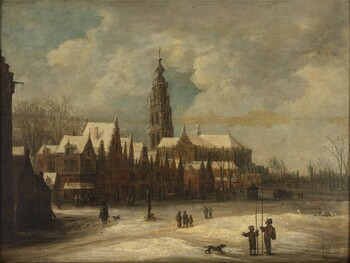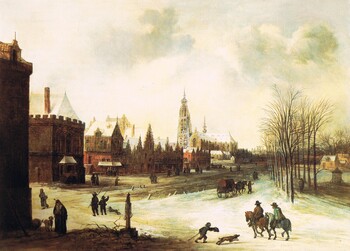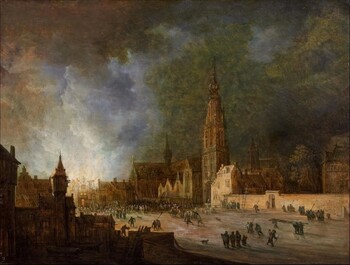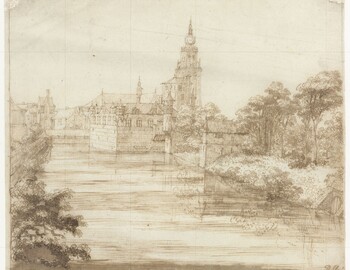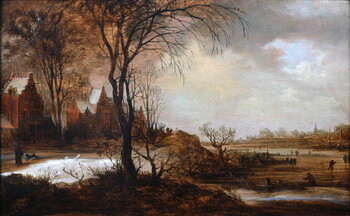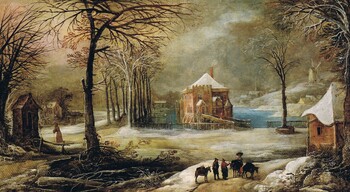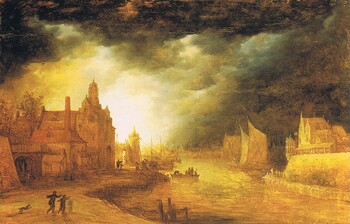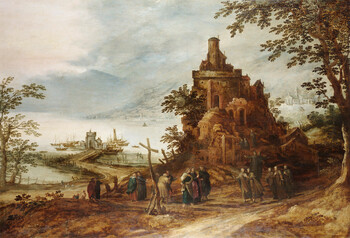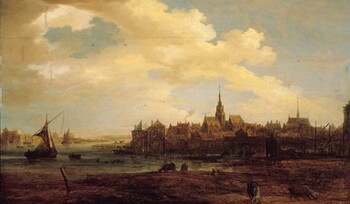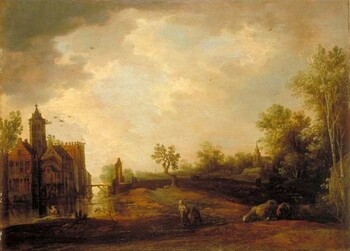8.400 €
A winter view of Breda
Oil on canvas : 63,3 X 78,2 cm
Unsigned
Frame : 78,0 X 93,2 cm
In short
Frans de Momper was a versatile Flemish land- and townscape painter. He was a nephew of Joos de Momper II.
Frans spent his career in his birthplace Antwerp, except for some five years during the second half of the 1640s, when he lived in Holland, in The Hague, Haarlem and Amsterdam.
De Momper painted a few views of Breda, which was an important border town between Flanders (that belonged to the Spanish crown) and Holland, that fought for its independance from the Spaniards.
Our painting stands close to an unsigned work in the Statens Museum for Kunst of Copenhagen, which is given in full to Frans de Momper.
About Frans de Momper
Flemish painter
Antwerp 1607 – 1660 Atwerp
Landscape painter: painter of town and village views, beach scenes and winter landscapes.
Nephew of the famous landscape painter Joos de Momper II.
Son of the further unknown landscape painter Jan or Hans de Momper II.
Frans’s brother, Philips de Momper II (Antwerp circa 1610/15 – 1675 Amsterdam), was also a painter.
In 1629 Frans became a Master in the Antwerp Painter’s Guild of Saint Luke.
Probably from around 1646 and in 1647 he was active in The Hague.
In 1648 he was active in Haarlem.
Subsequently active in Amsterdam in 1648/49.
Frans returned to Flanders,to his birthplace Antwerp, in August 1650.
Frans was influenced by his uncle Joos II, especially in his adaptation of vast panoramic spaces and in his delicate rendering of figures and trees.
In Holland he got influenced by the earlier tonal paintings from the 1630s of Jan van Goyen, painting monochrome compositions in reddish-brown tonalities with low horizons. He was also influenced by van Goyen’s town views from the 1640s.
Apparently Frans de Momper never dated his paintings.
About The Groote Kerk in Breda
The church in the background is the Groote Kerk, the main church of Breda. Its original wooden spire was destroyed in a fire following a thunder-storm May 11th 1694. The new spire was finished in 1702.
Frans de Momper painted several times town views of the city of Breda, as you may see in my first four comparative paintings by him.
The viewpoint of our composition stands very close to my first comparative work, a painting from the Statens Museum in Copenhagen.
A painting which was in 1986 with Gallery Hoogsteder has a similar, much broader view of the town.
About the Eighty Years’ War
The Eighty Years' War, the Dutch war of independence from Spain, was a long, slow war that lasted from 1568 until 1648. The war started of as a Protestant uprising in Flanders and in Holland against the Catholic Spanish Habsburg. It ended with the Peace of Westphalia in 1648: Spain recognized an independent Republic of the Seven United Provinces, Holland, while Flanders remained Spanish.
Breda formed an important hinge point between Spanish-controlled Flanders and the Netherlands.
The War can be divided into four phases:
- 1568 until circa 1600: this period ends with Prince Maurice taking a lot of towns from the Spaniards.
- 1609 – 1621: the Twelve Years’ Truce.
- 1621 – 1625: important Spanish successes, for example the fall of Breda in 1625, six weeks after the Dutch Stadtholder Prince Maurice died.
- 1625 – 1648 : the new Stadtholder Frederick Henry besieged town after town, a relatively slow system that paid of well. In 1637 the Dutch were able to conquer Breda back for the third and final time on the Spanish troops.
The Dutch were lucky: while Spain was regularly in great need of money, with soldiers and mercenaries that could not be paid, the Dutch had captured under Admiral Piet Hein the famous Spanish silver fleet in Cuba in 1628. All this money could now be used for the war.
An offensive and defensive treaty sealed with France in 1635 proved to be very successful and finally forced Spain to accept peace with an independent Dutch Republic: the Treaty of Westphalia or Munster of 1648.
Why should you buy this painting?
Because it is an attractive, lively winter view of this small Dutch town that played a major role during the Eighty Years’ War.
Comparative paintings
Click photos for more details

